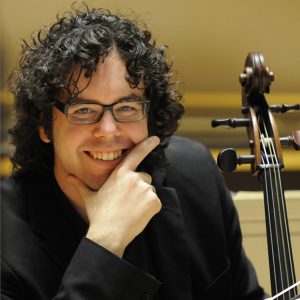
On “What Makes a Baroque Cellist”: Foreign Languages (Part 2)
Guy Fishman
In the previous segment of this blog post I began providing an attempt at an answer to “What Makes a Baroque Cellist.” I ended with the assertion that what unites many of my favorite early-music practitioners—who in fact often enjoy active careers playing music from all eras, including our own—is a love for language. I promised that this love is what helps define a “baroque” player, at least of the sort that I admire. I’d like to illustrate how this is in the following.
There are volumes upon volumes written by brilliant women and men on the causes for the dawn of late-nineteenth century isms: Expressionism, Cubism, Dadaism, then Neoclassicism, Minimalism, etc. When tonality had outlived its usefulness to some composers, they created new languages. Their favorite performers had the benefit and privilege of having the composer teach them his or her new language. Theorists (oftentimes the composers themselves) could write extensively on the new language in order to try to attune the public’s ear to it. The creation of a new language was occurring quickly and before everyone’s eyes and ears, and by midcentury many spoke the new tongues and few were exempt from having to gain fluency in them.
I recently had the pleasure of coaching several terrific college students on some baroque music. Armed with an already sure technique, they glided through even the most demanding passages. But it wasn’t always right; they found that they were speaking a language with a heavy accent, perhaps with but a remedial understanding of its grammatical structure, and an unfamiliarity with its idioms and nuances. After all, early music, too, is a language, and to these excellent players it was, nonetheless, a foreign language. Of course they had played Bach and Vivaldi before, and their playing was certainly legible, much in the same way that I can read a language written in an alphabet I know. By understanding a few basic rules of pronunciation, I may cause a native speaker to recognize that I am, indeed, reading this language. He or she may even comprehend what I am reading. But I won’t. I will adjust my vocal mechanism to produce a sound as near as possible to what I know the language is supposed to sound like, and my understanding of grammar may even help me inflect my sentences this way or that. But the intentionality made apparent by speaking a language fluently, born of a native knowledge or one learned later on, can only be achieved by immersing oneself in the sounds, sensations—both aural and physical—inflections, idioms, dual-meanings, and if possible, the context, the environment, and the circumstance in which the language is commonly spoken. This not only allows one to express one’s self in a foreign tongue, but also to live the spirit of the language, and therefore the spirit of the people who speak it natively. As Bylsma told me, “I am one Anner when I speak English to you, another Anner when I speak French, and yet another when I speak German” (Bylsma speaks and writes in four, possibly five, languages fluently).
Speaking the language of early music transcends the instruments we use to play it. I absolutely encourage everyone to at least sample a baroque bow and gut strings, but the instrument as identifier of a “baroque” or “modern” player is becoming a relic of an earlier time. The instrument is sort of like your accent; you can speak a foreign language with a hint of your native self, just as you can play in an informed manner on an instrument fitted with steel and plastic. But you must know the language. You have to know about rhythmic hierarchy, poetic scansion, rhetoric, dance structures, ornamental and embellishment possibilities, harmonic rhythm, affect, and many more things that were thought of, discussed, and performed by the best musicians of the seventeenth and eighteenth centuries, and let’s face it, the nineteenth as well. The severing of the linguistic lineage of these musicians occurred much later than most of us realize, likely around the turn of the twentieth century, just when so many of those new languages were first being heard. Forays into understanding the early music language anew were made en masse about fifty or sixty years later, and today it is spoken by musicians wielding instruments with all sorts of setups. They do so not just because they want to, but also because the expectation that they should be able to is more fervent today than ever. Audiences have caught on, and to many, hearing 18th century music played with heavy early-20th century mannerisms will not do.
J.S. Bach composed and compiled a lovely collection of pieces for his eldest son, Wilhelm Friedemann, starting around 1720. He prefaced the work with a table explaining the correct performance of several ornaments. In fact, this was a slightly abridged version of a table published by Jean-Henri d’Anglebert, that Bach had copied ten years earlier. Even a great baroque composer like Bach understood the elements in his art which would be perceived as a foreign language, and sought to teach his son how to speak them. I try to follow Bach’s example, and in so doing I find my best attempt at an answer to “What makes a baroque cellist?” A baroque cellist – not a cellist with a baroque cello – speaks foreign languages, and strives to sense the spirit of those who spoke them natively.
That, dear reader, is the best I can do. I think I will let the seminal question here rest a while. But I think I should address some practical matters that I regularly encounter when playing period cello. Next week, why don’t we reconvene and instead of thinking of “What Makes a Baroque Cellist,” let’s talk about “How to Play a Baroque Cello.”
Subjects: Baroque, Historical
Tags: Bach, Baroque, cello, Guy Fishman, Historical Performance, language
